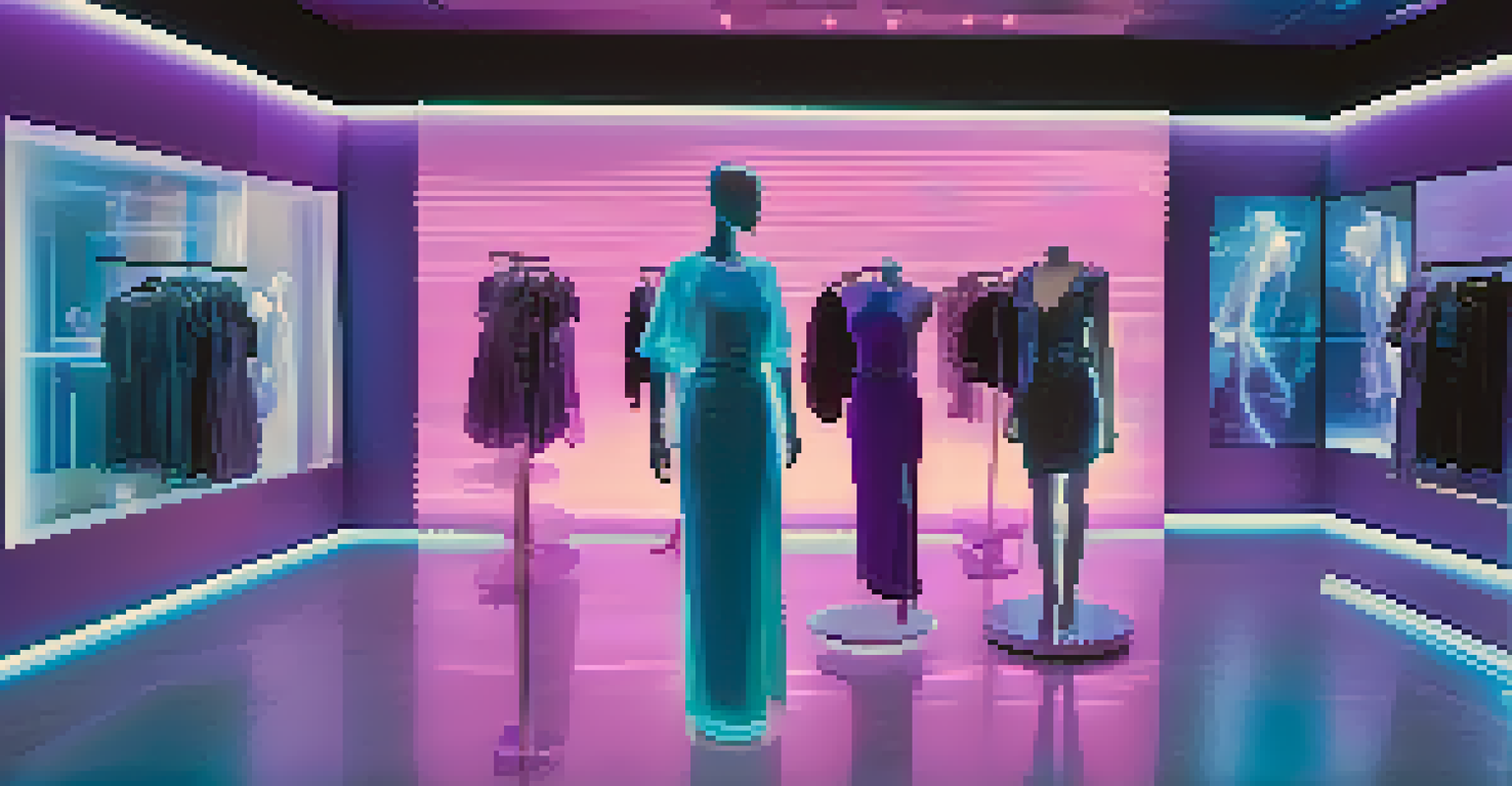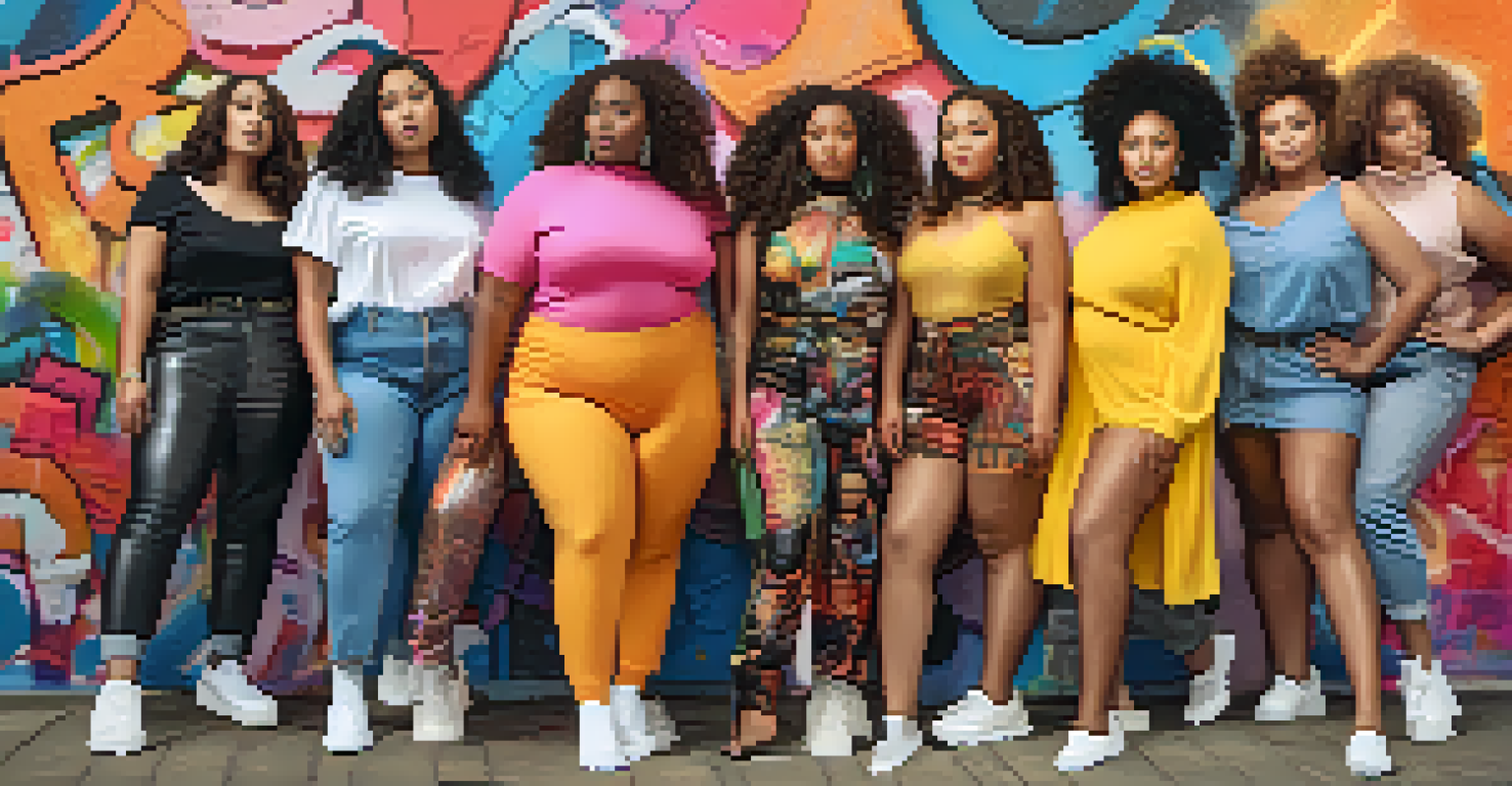Top 10 Fashion Retail Trends Shaping the Industry in 2023

Sustainable Fashion: A Shift Towards Eco-Friendly Practices
In 2023, sustainability is not just a trend; it's a necessity. Consumers are increasingly demanding eco-friendly products, pushing brands to adopt sustainable practices. From using recycled materials to reducing waste in production, the fashion industry is embracing a greener approach.
Sustainability is no longer a trend; it's a necessity. It's about making responsible choices that will benefit future generations.
This shift is also about transparency. Brands are now sharing their sustainability journeys, allowing consumers to make informed choices. For example, many companies now provide detailed information about their supply chains and production processes.
As the awareness of environmental issues grows, sustainable fashion is expected to become a key differentiator. Brands that prioritize eco-consciousness are likely to foster loyalty and attract new customers who value sustainability.
The Rise of Digital Fashion and Virtual Showrooms
With the growth of technology, digital fashion is making waves in 2023. Virtual showrooms and digital clothing are becoming popular, allowing customers to explore collections from the comfort of their homes. This trend is not only convenient but also opens up new avenues for creativity.

Brands are increasingly collaborating with digital artists and influencers to create unique virtual experiences. Imagine trying on outfits through augmented reality or attending a fashion show in the metaverse! These innovative approaches are reshaping how consumers engage with fashion.
Sustainable Fashion Grows Essential
In 2023, consumers demand eco-friendly practices, prompting brands to adopt transparency and sustainable approaches.
Moreover, digital fashion is also more sustainable. By eliminating the need for physical samples, brands can reduce waste and focus on creating more personalized experiences for their customers.
Omnichannel Retailing: A Seamless Shopping Experience
Omnichannel retailing is no longer optional; it's essential for success in 2023. Consumers expect a seamless shopping journey that blends online and offline experiences. Whether they're browsing on their phones or trying clothes in-store, the transition should be smooth.
Fashion is a form of self-expression, and inclusivity allows everyone to express themselves without restriction.
Brands are investing in technology to enhance this integration. For instance, many retailers are using apps that allow customers to check store inventory, making it easier to find the products they want. This convenience can significantly boost customer satisfaction.
Furthermore, personalized marketing strategies across channels are becoming common. By leveraging data, brands can tailor their messaging to meet individual customer needs, fostering a deeper connection and encouraging repeat purchases.
Personalization: Tailoring the Shopping Experience
Personalization is a major trend that continues to shape the fashion retail landscape in 2023. Customers crave unique experiences, and brands are leveraging data to deliver tailored recommendations. This could be as simple as suggesting items based on previous purchases or as advanced as creating custom-fit clothing.
Utilizing AI and machine learning, retailers can analyze consumer behavior to offer a more personalized shopping experience. This not only enhances customer satisfaction but also increases conversion rates, as shoppers are more likely to purchase items that resonate with their style.
Digital Fashion Offers New Experiences
The rise of digital fashion in 2023 allows customers to explore collections virtually, reducing waste and enhancing creativity.
Additionally, brands are focusing on building relationships through personalized communication. By addressing customers by name and understanding their preferences, companies can create a more engaging shopping environment that fosters loyalty.
Resale and Second-Hand Shopping: A Growing Market
The resale market is booming in 2023, with second-hand shopping becoming a mainstream choice for consumers. More people are opting to buy pre-loved items, not only for sustainability but also for the thrill of finding unique pieces. This shift is reshaping how brands approach inventory and product life cycles.
Many fashion retailers are now incorporating resale options into their business models. By partnering with resale platforms or launching their own second-hand sections, brands can reach a broader audience while promoting circular fashion.
This trend also appeals to younger consumers who value individuality and sustainability. As a result, resale shopping is not just a trend; it's a significant shift in consumer behavior that brands must adapt to.
Inclusivity: Expanding Size and Diversity in Fashion
In 2023, inclusivity is at the forefront of fashion retail. Brands are expanding their size ranges and showcasing diverse models to reflect the real world. This shift is not just about representation; it's about acknowledging and celebrating different body types and backgrounds.
Consumers are increasingly supportive of brands that embrace diversity. By offering clothing that caters to a wider range of sizes and styles, brands can foster a sense of belonging among their customers. This approach can lead to stronger brand loyalty and a more positive public image.
Sustainable Fashion Is Essential
In 2023, sustainability has become a crucial demand from consumers, prompting brands to adopt eco-friendly practices.
Moreover, inclusive marketing strategies are becoming more prevalent. Campaigns that feature diverse models and authentic storytelling resonate well with consumers, creating a deeper emotional connection to the brand.
Tech Innovations: AI and AR in Fashion Retail
Technology continues to revolutionize the fashion retail landscape in 2023. Artificial intelligence (AI) and augmented reality (AR) are being integrated into the shopping experience, making it more interactive and engaging. Customers can now visualize how clothing will look on them without trying it on physically.
For instance, virtual fitting rooms powered by AR allow consumers to see how garments fit their body shape. This not only enhances convenience but also reduces the likelihood of returns, benefiting both consumers and retailers.

Additionally, AI is being used to analyze data and predict trends. By understanding customer preferences, brands can create collections that resonate with their audience, ultimately driving sales.
Social Media Influence: Shaping Fashion Choices
Social media continues to play a significant role in shaping fashion retail trends in 2023. Platforms like Instagram and TikTok have become influential spaces where consumers discover new styles and trends. Fashion brands are leveraging these platforms to engage with audiences through eye-catching content and influencer partnerships.
The rise of social commerce has further blurred the lines between social media and shopping. Consumers can now purchase items directly through social media posts, making the shopping experience more immediate and accessible. This trend is especially popular among younger demographics who are accustomed to seamless online interactions.
Digital Fashion and AR Rise
The integration of digital fashion and augmented reality is transforming how consumers shop, offering innovative and sustainable solutions.
Moreover, user-generated content is becoming a powerful marketing tool. Brands that encourage customers to share their fashion experiences on social media can enhance their authenticity and create a sense of community around their products.